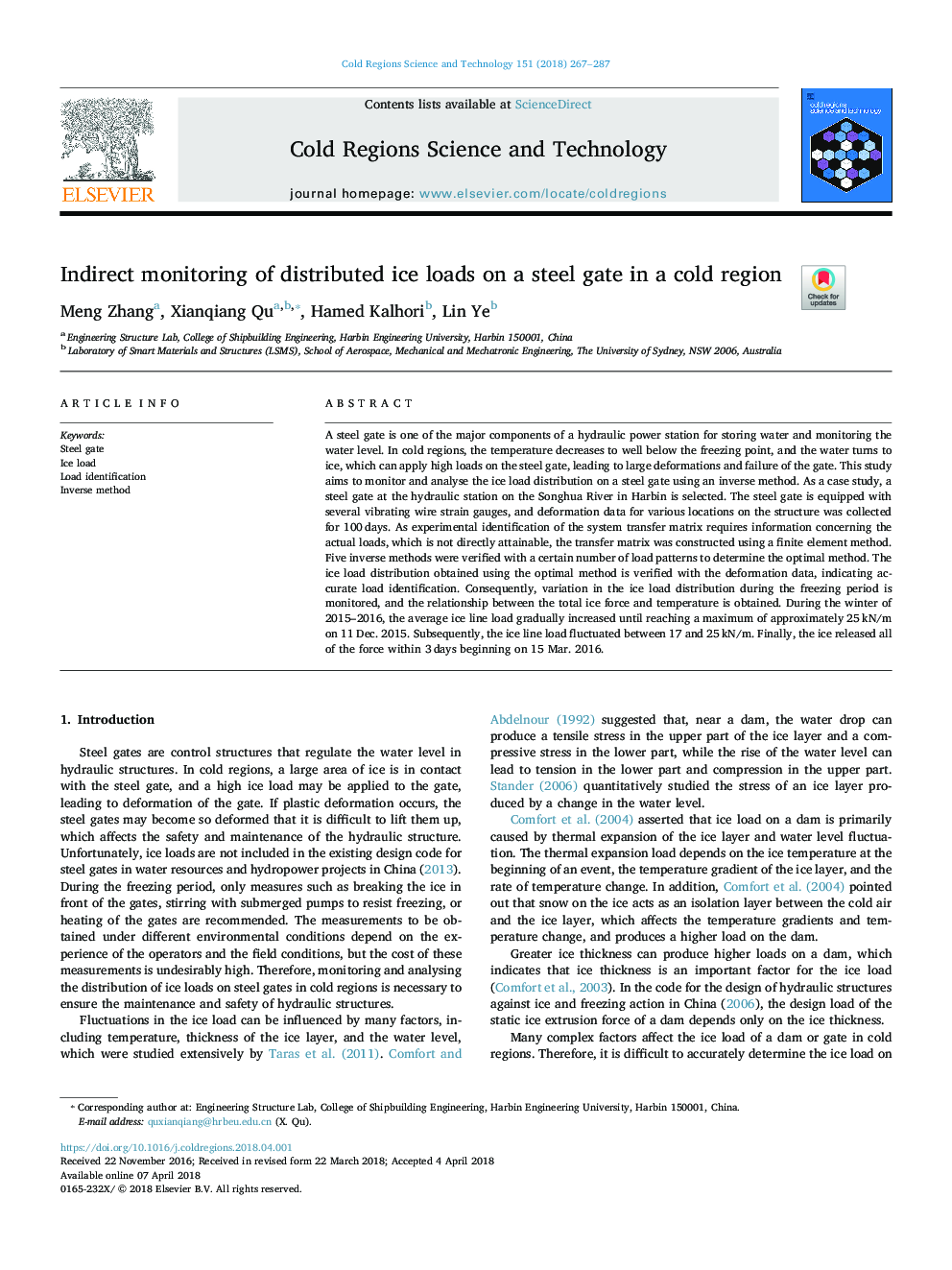| Article ID | Journal | Published Year | Pages | File Type |
|---|---|---|---|---|
| 8906489 | Cold Regions Science and Technology | 2018 | 21 Pages |
Abstract
A steel gate is one of the major components of a hydraulic power station for storing water and monitoring the water level. In cold regions, the temperature decreases to well below the freezing point, and the water turns to ice, which can apply high loads on the steel gate, leading to large deformations and failure of the gate. This study aims to monitor and analyse the ice load distribution on a steel gate using an inverse method. As a case study, a steel gate at the hydraulic station on the Songhua River in Harbin is selected. The steel gate is equipped with several vibrating wire strain gauges, and deformation data for various locations on the structure was collected for 100â¯days. As experimental identification of the system transfer matrix requires information concerning the actual loads, which is not directly attainable, the transfer matrix was constructed using a finite element method. Five inverse methods were verified with a certain number of load patterns to determine the optimal method. The ice load distribution obtained using the optimal method is verified with the deformation data, indicating accurate load identification. Consequently, variation in the ice load distribution during the freezing period is monitored, and the relationship between the total ice force and temperature is obtained. During the winter of 2015-2016, the average ice line load gradually increased until reaching a maximum of approximately 25â¯kN/m on 11 Dec. 2015. Subsequently, the ice line load fluctuated between 17 and 25â¯kN/m. Finally, the ice released all of the force within 3â¯days beginning on 15 Mar. 2016.
Related Topics
Physical Sciences and Engineering
Earth and Planetary Sciences
Earth and Planetary Sciences (General)
Authors
Meng Zhang, Xianqiang Qu, Hamed Kalhori, Lin Ye,
